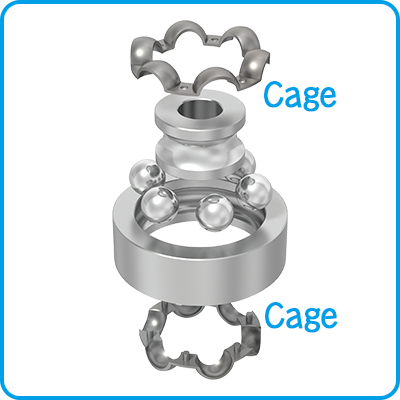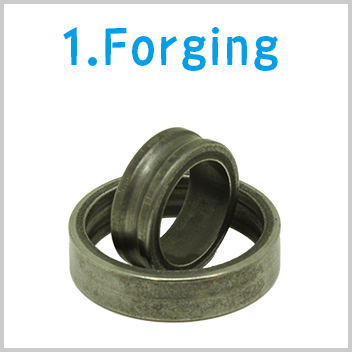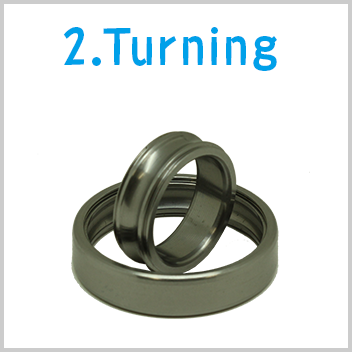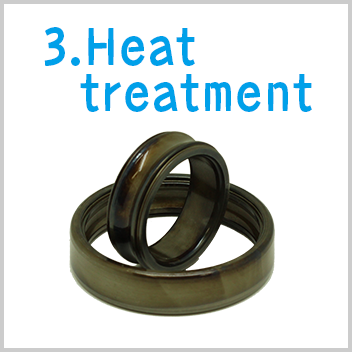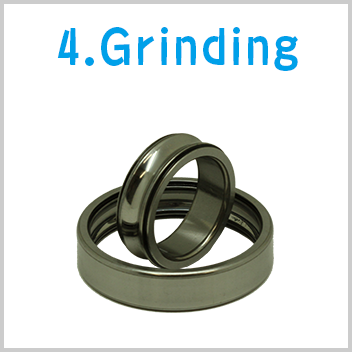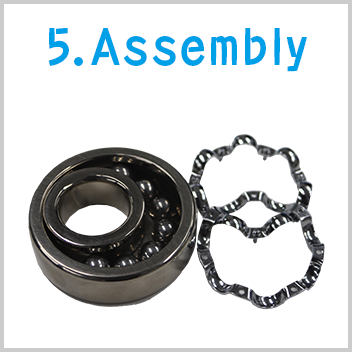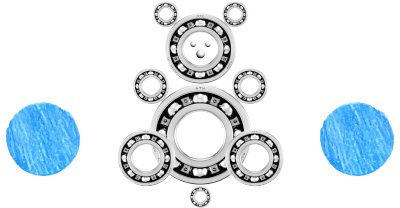
Structure and types of bearings
Bearings use “balls” or “rollers”
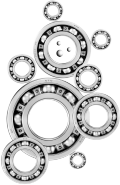

Bearings consist of three parts: the inner ring, outer ring, and balls. Balls are sandwiched between the inner ring and outer ring. The inner ring and outer ring are called a “raceway,” and the ball is called a “rolling element.” There are two types of rolling elements: “balls” and “rollers.”
The “cage” or “retainer” holds the balls in place to prevent them from colliding with each other and from coming off the raceway.
The difference between balls and rollers
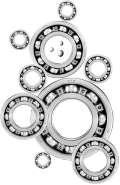

Bearings using rolling elements such as balls and rollers are called “rolling bearings.” Rolling bearings are divided into various types according to the shape of rolling elements and raceways, each of which has its own features.
Generally speaking, bearings using balls are suitable for high speed rotation, and bearings using rollers can withstand large loads.

History of bearings
Heavy stones were carried with rollers
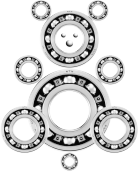

The history of bearings goes back to prehistoric times. At that time, it was necessary to carry large and heavy stones in order to make a huge building. This was an age in which there were no cranes or bulldozers as there are now. It is said that people carried stones by placing cylinder-type rollers on the ground. They could then move the stones by using rollers to reduce friction.

Rollers evolved into bearings
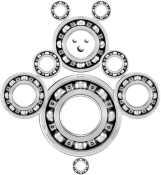

The technique of carrying heavy things by using rollers is said to be the origin of bearings. When rollers arranged on the ground are put into a circle, it looks like the shape of a modern bearing.

The Industrial revolution spreads the use steel bearings


With the industrial revolution in the UK in the latter half of the 18th century, the importance of bearings had increased and bearings using balls appeared.
In the 19th century, people succeeded in producing hard steel allowing for tough and small bearings, which could support the development of various industries including automobiles.
Leonard da Vinci designed
a bearing with balls!
Leonard da Vinci, a universal genius in the 15th century, drew a sketch that became the basis of today's bearings. What he sketched was a current ball bearing, which uses balls instead of rollers. He had envisioned the ball bearing before bearings became widely popular.

Examples of where bearings are used
About 100 to 150 bearings are used in every automobile


Bearings are used in a variety of areas in automobiles including engines that create the power, transmissions that control the engine's power, and hubs in the central part of tires. The number of bearings used per vehicle ranges from 100 to 150. Bearings are indispensable components of safe and comfortable driving.

Support high speeds of railway rolling stocks


Bearings are used in railway rolling stocks; in the journal applications that rotate wheels, the motors that generate journal rotation, and in gear units that convey motor rotations to the journal applications. The secret of a high speed railway rolling stocks running at a speed of as high as 300km/h is in its bearings.

Rotate in high speed of aircarft engines


Bearings are used in jet engines that generate power for aircraft to fly, wheels that are indispensable for takeoffs and landings, as well as doors and air conditioners. Jet engines in flight rotate approximately 10,000 times per minute, reaching temperatures above 200°C. Bearings made of special materials are used in jet engines to enable high speed rotation at such high temperatures.

Used in large wind turbines


Wind turbines, which generates electricity by rotating its blades with wind, have a height of at least 100 meters. Some bearings used in the main shaft that conveys the rotations of the blades are larger than 2 meters in diameter, and their weight is approximately 2 tons. In addition to the main shaft, a variety of bearings are used in important parts of the wind turbine such as the gearbox which increases the rotational speed of the shaft, as well as the generator that generates electricity.

A ball for a bearing is the most perfect sphere on the planet
If the ball for a bearing is uneven or distorted, the bearing will not rotate smoothly.
Therefore, the ball is thoroughly refined so that the unevenness differences are less than a submicron (1/10,000mm). The thickness of a baby's hair is about 0.1mm.
The unevenness of ball for a bearing is a perfect sphere, only about 1/1000 of the thickness of the baby's hair.
Types of bearings
Types of bearings by direction of load
(radial or thrust)


Depending on the weight and movement of the machine, bearings are subjected to loads from various directions. The load applied vertically to the shaft supported by bearing is called “radial load,” and the load applied horizontally to the shaft is called “axial load.”
There are bearings suitable for receiving these loads respectively. Bearings suitable for receiving radial load are called “radial bearing” and receiving axial load are called “thrust bearing.” When choosing bearings, it is ncessary to consider the type of rolling elements (ball or roller) as well as how to receive the load (radial or thrust).


Various types of bearings by shape and function


There are various types of bearings depending on the type of rolling elements and outer ring and inner ring shapes. Each bearing has a distinctive function. Here are some typical bearings.
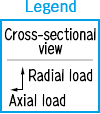
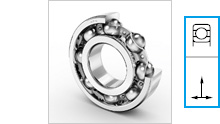
Deep groove ball bearing
This is the most common bearing using balls. It receives radial load and is suitable for high speed rotation. It is widely used in various application.
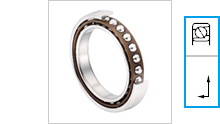
Angular contact ball bearing
This has angular contact where balls contact with inner ring and outer ring. It can receive both radial and axial loads.
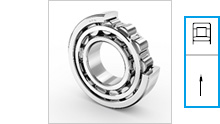
Cylindrical roller bearing
This is a bearing using cylindrical rollers. It receives radial load. Thanks to the rollers, it can withstand large load and shock.
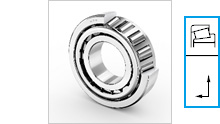
Tapered roller bearing
This is a bearing using tapered rollers. The rolling surfaces of inner and outer rings are also tapered. It can receive both radial and axial loads.
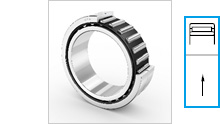
Needle roller bearing
This is a bearing with a large number of slender rollers. It receives radial loads. As the inner ring and outer ring are thin and many roller are used, the small size bearing can withstand a large amount of loads.
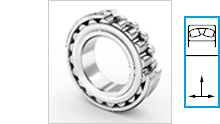
Spherical roller bearing
This is a bearing using barrel-shaped rollers called spherical rollers. It receives both radial and axial loads. As the rolling surface of outer ring is spherical, it can adapt to shaft deflection and inclination.

Sliding bearings that do not use balls or rollers
There are sliding bearings which do not use rolling elements such as balls or rollers: plastic bearings which process plastic, and oil-impregnated sintered bearings which are made of baked metallic powder. Depending on the materials, they have various features such as resistant to water and electricity.

Manufacturing process of a bearing
1.Forging -Create rings-


First, cut the steel according to the size of the bearing.
The cut material is then heated at a high temperature, and pressed by a pressing machine to create a circular thick plate.
A metallic mold is used to change the shape of the plate to create a ring. Then, the ring is expanded to the size needed.
The completed rings become the inner rings and outer rings of bearings.
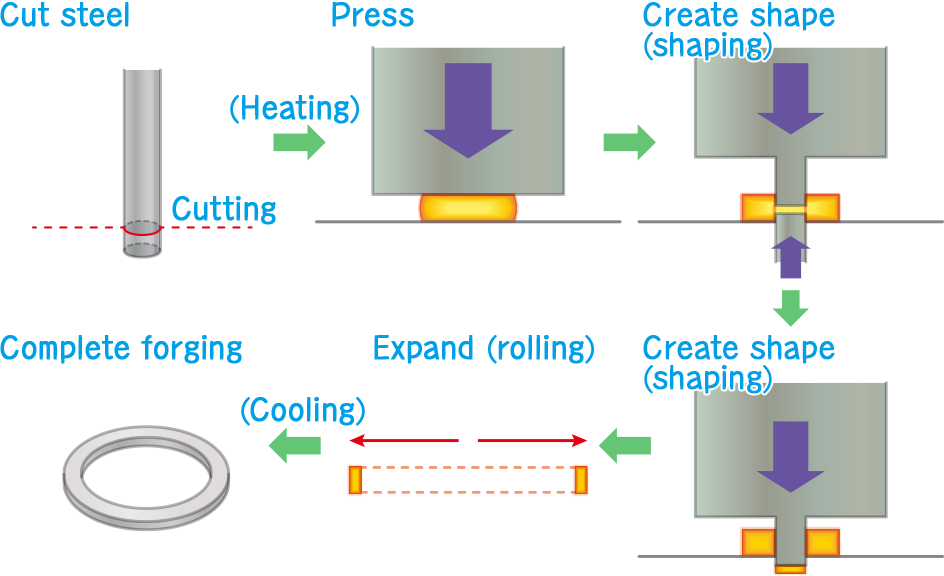
2.Turning -Make a rough shape-


The ring that has finished forging is shaved by a machine called a lathe*, and processed in a rough form.
The raceway surface where the balls roll is also created at this time.
- * Lathe: Machine for processing with fixed tool on a rotated workpiece.
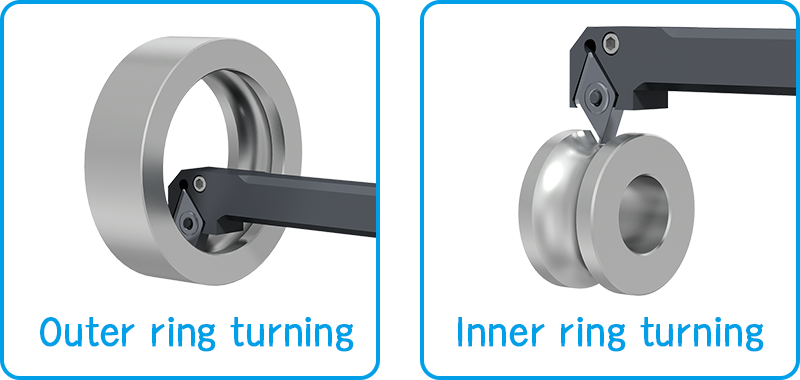
3.Heat treatment -Heat and cool to enhance toughness-


Once the material is shaped, it is heat treated to make it strong and tough. This is done by quickly heating the metal to 800°C or higher, adding oil and colling quickly.
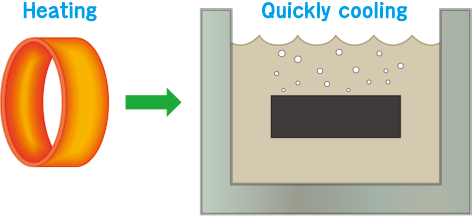
4. Grinding –accuracy within micrometers-


Material that completed heat treatment is processed using a grinding machine*. Finish the widths, outer diameter, inner diameter, and grooves to the dimensions with accuracy of one micrometer (1/1,000mm).
The raceway surface is particularly refined to make it easier for ball to roll.
- * Grinding machine: Machine for processing with rotated tool on a fixed workpiece.
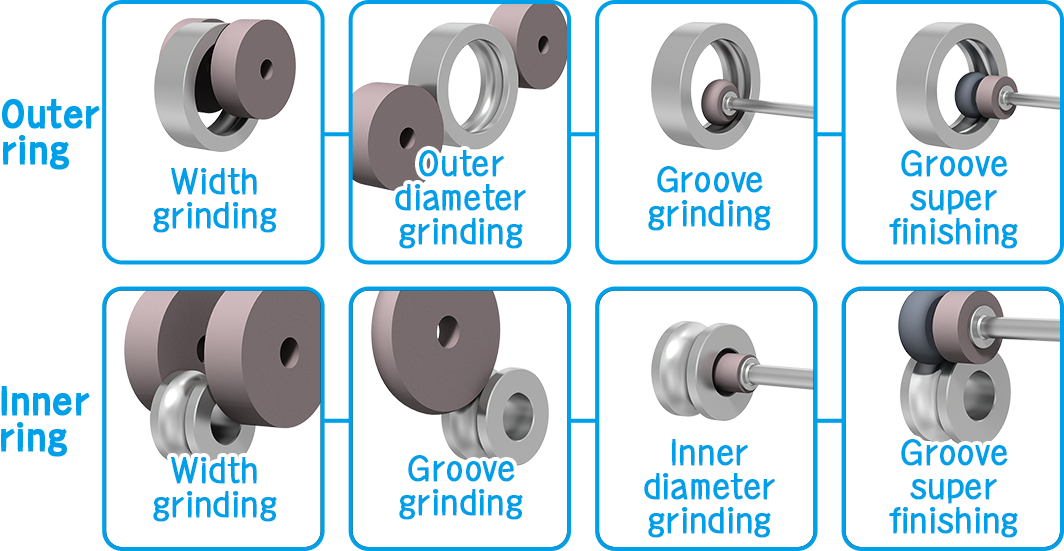
5.Assembly


Insert balls between outer ring and inner ring. Then fix retainer(cage) from top and bottom with balls spaced evenly.
